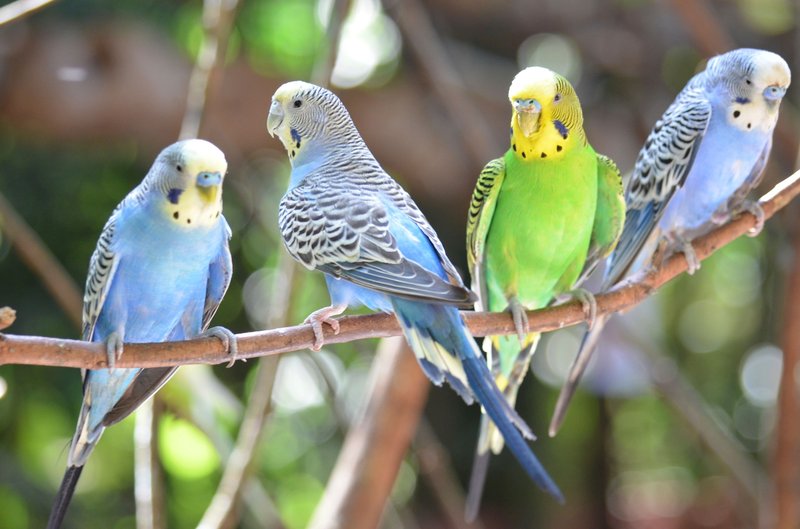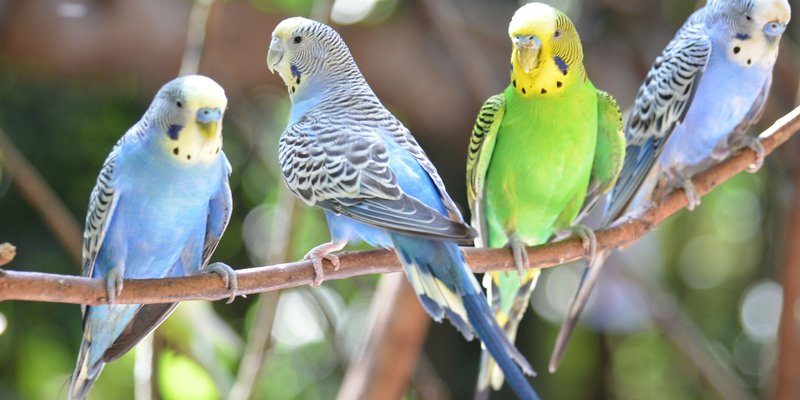
Think of your budgie’s vocalizations as a language, a form of communication that tells you what’s on their mind. Just like humans use words, tones, and body language to express emotions, budgies do the same. Whether it’s a soft tweet or a loud squawk, each sound tells a unique story. Understanding this language can strengthen the bond between you and your feathery friend, making for a happier pet and owner relationship.
Let’s dive into the fascinating world of budgie vocalizations. We’ll explore different sounds, what they signify, and how you can respond to your little buddy’s chatter. Ready to become a budgie whisperer?
The Basics of Budgie Sounds
Budgies are incredibly vocal, and their sounds can range from gentle whistles to loud screeches. They don’t just chatter randomly; there’s a distinct purpose behind each sound. Understanding these basic sounds is essential for any budgie owner.
Chirps are the most common vocalization you’ll hear. They often signify that your budgie is feeling happy or content. Imagine your budgie perched in its cage, chirping away happily while looking at you. It’s their way of saying, “I’m enjoying this!”
On the other end of the spectrum are screeches, which can indicate distress or excitement. If your budgie suddenly lets out a loud squawk, it might be startled or trying to get your attention. Think of it as them saying, “Hey, something’s going on!”
You might also hear soft whistles and trills. These sounds often reflect a calm and relaxed mood. When your budgie whistles a sweet melody, it’s a sign they feel safe and comfortable in their surroundings.
Understanding Specific Vocalizations
Different vocalizations have specific meanings beyond just expressing happiness or distress. By tuning into these sounds, you can better cater to your budgie’s needs.
For instance, if your budgie starts making a “beep-beep” sound, it could mean they’re feeling playful and want to engage with you. This is a great time to get out some toys or interact with your feathered friend.
Conversely, if you hear a “hissing” noise, it often indicates that your budgie feels threatened or scared. This sound is a warning, so pay attention to their body language and try to reassure them by speaking softly.
Another interesting sound is the “growl”. It may sound strange, but it can mean that your budgie is feeling territorial. If they growl while perched on their favorite spot, they may be letting you know that they don’t want to be disturbed. It’s their way of claiming their space!
How Environment Influences Vocalizations
Did you know that your budgie’s environment can greatly impact its vocalizations? Just like people might shout in a noisy bar or whisper at a library, budgies adjust their sounds based on their surroundings.
If your home is filled with music or chatter, your budgie might respond by being more vocal. They enjoy joining the fun and might even try mimicking the sounds around them! This is a great opportunity to expose them to different tunes or even teach them phrases.
However, if your budgie is in a quiet space, you might find them tending to be more subdued. They might chirp softly or stay silent more often. It’s all about comfort—if they feel relaxed, they’ll vocalize calmly.
Here’s the thing: ensuring your budgie feels at home in their environment will encourage them to express themselves freely. So, consider their surroundings, and watch how it influences their conversations!
Budgie Vocalizations as a Form of Social Interaction
Budgies are social creatures that thrive on interaction. Their vocalizations not only communicate their feelings but also help strengthen social bonds, both with humans and fellow birds. If you have more than one budgie, you’ll notice how they often converse with each other.
When two budgies engage in vocalizations, it can sound like a delightful back-and-forth exchange. They may mimic each other or respond to each other’s calls. This kind of communication is crucial for their social development. It allows them to establish hierarchies and bond with their companions.
If you’re the sole pet in your budgie’s life, don’t fret! Engaging with them verbally can help fill this social gap. Try talking to your budgie regularly, and you’ll likely hear them respond with chirps or whistles, letting you know they’re listening. It’s a wonderful way to create that connection, making your budgie feel loved and understood.
Why Understanding Vocalizations Matters
So, why should you pay attention to your budgie’s vocalizations? Understanding their sounds can improve their quality of life and yours. When you respond appropriately to their needs, you build a strong bond that encourages trust and affection.
When your budgie feels heard, they’re more likely to exhibit positive behaviors. For instance, if they’re chirping to get your attention, responding can make them feel valued. Ignoring them might lead to frustration or even behavioral issues like anxiety.
Additionally, knowing what their sounds mean can help you recognize when something is wrong. If your usually chatty budgie suddenly goes quiet or starts vocalizing distress sounds, it could be a sign of illness or discomfort. Understanding their vocal language puts you in a better position to take care of their health.
Tips for Encouraging Healthy Vocalizations
If you want to encourage your budgie to vocalize more freely, there are several things you can do. Creating an engaging environment is key to making your budgie feel happy and confident enough to chat.
First, consider providing a variety of toys. Fun, stimulating toys can keep your budgie entertained and encourage them to express themselves. Interactive toys that make sounds or require problem-solving are perfect for this!
You might also want to spend more time talking to your budgie. Play some soft music or even use a budgie training app with sounds to stimulate their vocalization. When they hear other birds or sounds, it might just spark their curiosity and get them chatting!
Lastly, consider their social needs. If possible, having a second budgie as a companion can be highly beneficial. They’ll chatter away together, providing a lively atmosphere and encouraging vocalization.
Wrapping It Up: Speak Budgie!
Understanding your budgie’s vocalizations opens a whole new world of communication. By paying close attention to the sounds they make, you can strengthen your bond and ensure they feel comfortable and happy in their environment.
Whether it’s a chirpy hello or a concerned squawk, each sound carries meaning. So, the next time your little buddy starts chattering away, take a moment to listen. Who knows? Your budgie might be sharing its thoughts, feelings, or even reaching out for a little love and attention.
Happy chatting with your feathered friend!

